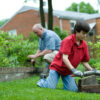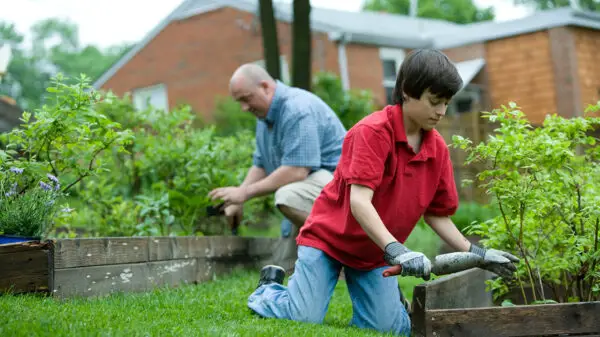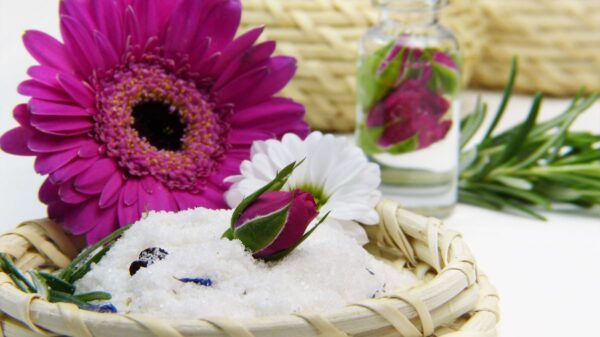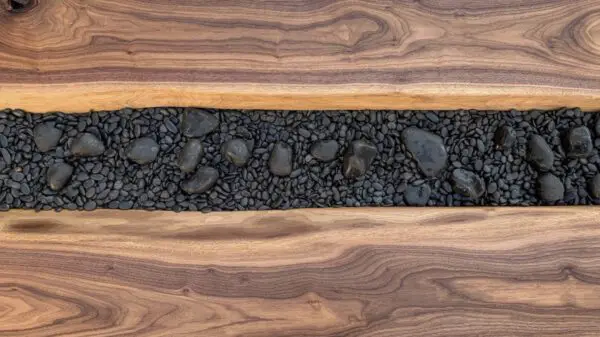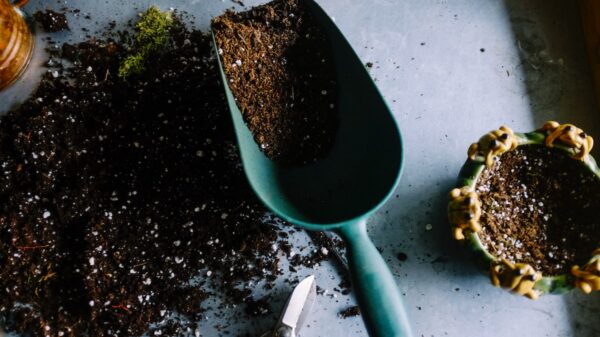How to Grow An Indoor Vegetable Garden
There’s nothing like eating fresh vegetables. It reminds you of summer. You go out to the garden and pick what you want. Once the fall comes and winter soon arrives, fresh vegetables are not as readily available as they were. Wouldn’t it be nice to be able to get those fresh vegetables?
Is it possible to have an indoor vegetable garden? Yes, it is. Growing vegetables from your leftover veggies is a great way to start. There are a few others and as you read, you will learn what they are.
Increasing numbers of individuals are becoming enamored by the idea of growing their food. Indoor gardening is much more convenient, and it saves you time going to the grocery store. However, if you believe that living in an apartment (like me) or not having a yard prevents you from doing so, think again!
Growing plants indoors is quite easy, and it doesn’t have to take up a lot of space. As you read further, you will read about everything you need to know about cultivating plants indoors. Here is a list of the greatest crops to cultivate in your indoor garden and how to grow them.
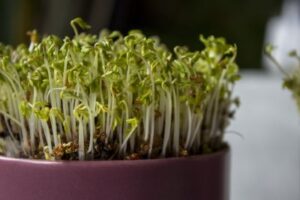
The Best Indoor Growing Vegetables
Choose plants that thrive best indoors if you want to make things easy on yourself. These veggies have shown to be effective indoors:
Tomatoes
This vegetable is a summer-long plant, but it can be grown indoors. They’ll require a lot of light, around 14 to 20 hours each day.
They’re self-pollinating like peppers, but you may also shake them to assist the pollen fall from blossom to blossom. In containers, however, the tiny types generally do better and germination occurs rapidly.
Potatoes
The potato may come as a surprise, but you can grow them (both sweet and ordinary) in soil from scraps.
Begin with a sprouted potato and cut it into pieces, laying them out on at least four inches of dirt so that the sprouts are facing up. Potatoes don’t need much space once they’re established in the ground. Cover them with an additional four inches of dirt and you’ll have potatoes in about two months!
Make sure you use a big enough container, since these can get large, and you may have to add soil as they develop to ensure that the potatoes are always covered with soil.
Leafy Salad Greens
Spinach, kale, and arugula are all cool-tolerant leafy salad greens that are highly reliable. They will grow in as soon as four weeks in restricted areas. These leafy greens require about 12 hours of exposure each day and thrive at temperatures ranging from 60 to 80 degrees Fahrenheit.
Herbs
Herbs are a category of vegetable and they enjoy the sunshine, so you’ll need to ensure they get enough of it: 12-16 hours a day. They thrive at temperatures ranging from 70 to 90 degrees Fahrenheit.
Great examples are:
- Chives
- Parsley
- Cilantro
- Oregano
- Mint
- Rosemary
- Sage Thyme

Scallions/ Green Onions
These odiferous and tasty vegetables thrive in cool, dark conditions. Scallions are very easy to grow and don’t require as much sunlight as some other veggies. You may either grow the seeds or replant the green onion root end after harvesting it.
Carrots
These orange veggies do not require as much room around them to spread out as some other veggies, but they do require deeper soil. They’re cool-tolerant vegetables that grow at 60 degrees Fahrenheit or less. Make sure they get adequate light, at least 12 hours a day.
Radishes
Radishes are fast growers, taking only 30 to 40 days from germination to harvest. They don’t require as much light as other crops but make careful not to overcrowd them so their bulbs may develop.
Microgreens
Microgreens are tiny but don’t be fooled by their size. Microgreens are packed with 40 times the vitamins and nutrients of fully grown plants. You’ll grow them the same way you would leafy salad greens. They should be harvested when they’re approximately 2-3 weeks old. Add them to sandwiches for a hearty crunch.
Hot Peppers
Peppers are warm-weather perennials that require bright light and full sun. However, because they’re self-fertilizing. Hot peppers can flourish indoors as long as the conditions are correct.
They like at least 70 degrees Fahrenheit, with 14-20 hours of daily light and a temperature range of 70-90 degrees F. Plant them in a pot that is at least eight inches tall and allow the soil to dry out between waterings.
Cucumber
These vegetables are climbers and need a lot of space around them. They require at least 12 hours of sunlight per day, and they do best in warm weather between 70-90 degrees Fahrenheit.
If you’re serious about growing cucumbers indoors, you should invest in a tall planter that gives the vines enough room to climb. Make sure the vines are tied to the trellis or plant support, though, or they won’t get any fruit.
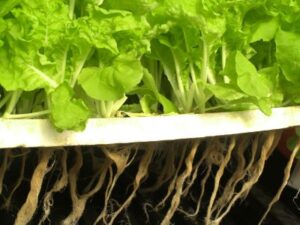
Helpful Hints To Grow Vegetables Indoors
Begin by selecting a container that is big enough for your plant’s roots to grow in and has a drainage hole in the bottom. You may make your container out of repurposed plastic yogurt tubs or storage bins, but any container with a drainage hole will suffice. Of course, you’ll need to set your container on something to catch any water overflow – a plant saucer is perfect.
Containers
Set your container plants on top of a layer of indoor potting soil, which is designed to help them flourish in artificial light. Set up your plants in front of a sunny window as soon as you’re ready to go.
The most significant impediment to vegetable growing is the lack of light. That’s why it’s critical to simulate outdoor conditions as closely as possible, either by relying on window light or investing in grow lights. Vegetables will require at least 4-6 hours of direct sunlight per day, while fruits need at least 8 -10 hours of light a day.
When it is time to water your plant, go light on the liquid. Because they are not subjected to outside heat, they don’t get as dried up as often, so be careful not to overwater. You should keep the dirt moist without being soggy or dry.
Indoor Plants
They might struggle with high humidity, so give them a spray each day or consider investing in a cool-mist humidifier. It is possible to observe buds beginning to form without the use of grow lights. However, it might take a few weeks or even months for you to be able to consume the edible part of the plant.
Summer is when you’ll get the most natural light, making it the ideal time to cultivate indoors. Crops can develop all year long, so long as you provide the right conditions.
No matter what plant you choose to grow, keep in mind that it requires only two things: sunlight and water. Without those keys to success, your indoor garden won’t be able to flourish. However, if you give them these necessities and plenty of care, then there’s no reason why your plants won’t turn out to be the biggest, most delicious plants in town.
Regrowing Vegetables From Scraps
When you want to grow potted veggies indoors, it appears like a lot of work. There is an even easier method to do it: regrow them from scraps. For instance, you can grow cucumber from the bottom part of a used and leftover cucumber.
All you need to do is put it in a container with water and within four days, sprouts will start to form and roots will begin growing. Then transfer it right away into the soil and make sure to keep the soil moist throughout the entire process.
All-in-one solutions may sometimes be hard to obtain. If nothing else, you should look for a tiny bag of alliums or onion grass seeds and some dirt among the lettuce leaves in your market’s compost pile. These herbs are also great candidates for regrowing from waste. Simply soak the bottoms in water and provide them with adequate light to see new leaves start developing.
Do Not Forget The Hydroponic Garden
It is not difficult to establish an indoor hydroponic garden. This fail-safe indoor gardening technique can even make the dullest thumbs green.
Hydroponics
This system can help you create fresh veggies all year. It’s a long-term gardening technique that provides your plants with the optimum conditions for growth and oxygen. It allows them to develop continuously as long as you give them adequate nutrients and light.
Hydroponic gardening does not need a large area to get started. This indoor system is ideal for apartment dwellers who do not have a lot of room for indoor gardening. Look for compact or vertical hydroponic planters and systems, as well as all the necessary components to start growing.
Hydroponics does not require soil, so there is less of a mess. These systems eliminate the guesswork for watering your plants by providing your plant roots with constant access to oxygen and water. There is no over-or under-watering since hydroponics grow without soil.
Conclusion
If you’ve been thinking about growing fresh veggies indoors, don’t let the unknown intimidate you. When all is said and done, your indoor garden can be a bountiful supplier of healthy produce for yourself or your family. Do not allow your lack of knowledge to limit you from trying something that in the end can save you quite a bit of time and money.



